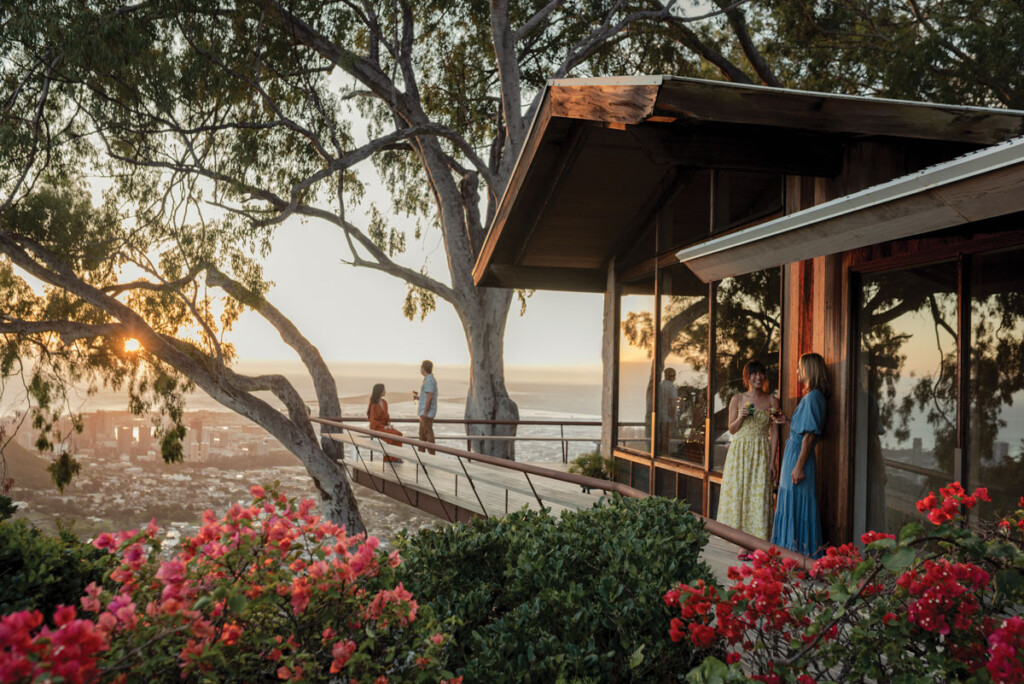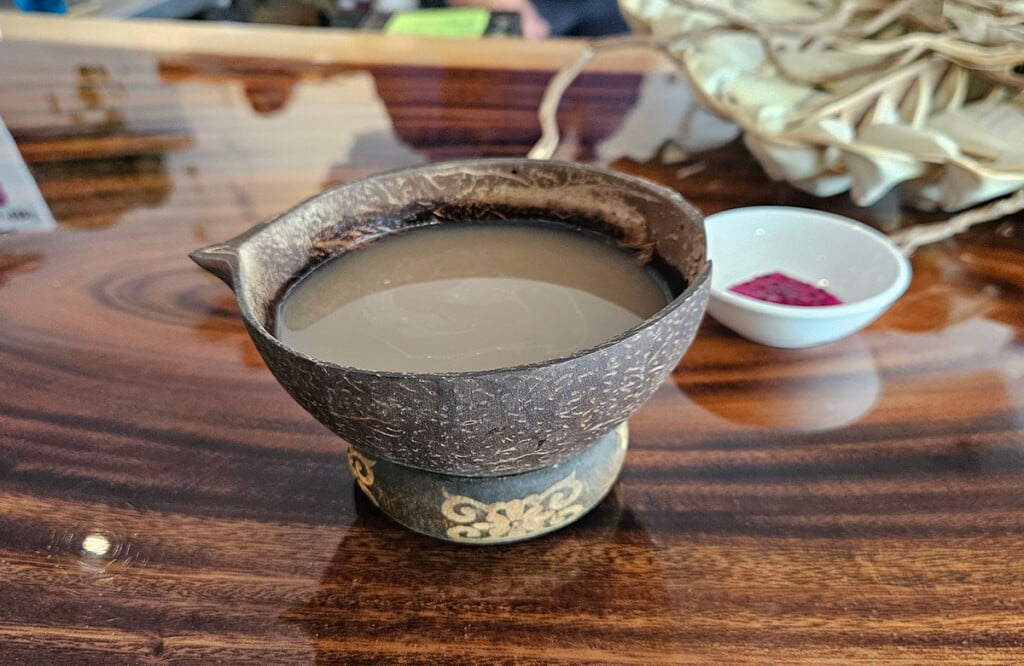HRA: Third Annual Hall of Fame
Meet this year’s inductees into the Hawaii Restaurant Association’s Hall of Fame.
As a nonprofit trade association, the Hawaii Restaurant Association (HRA) represents our state’s restaurants, food-service businesses, and the hospitality and tourism industries. These industries are cornerstones of Hawaii’s economy, with more than 3,500 locations employing 82,000 people.
In 2007, the HRA celebrated its 60-year anniversary. To mark the occasion, the group began its Hall of Fame.
Each year since, new inductees have been selected, chosen for their contributions to the image and quality of the restaurant and food- service industry in Hawaii; service to the industry through civic, philanthropic or educational outreach; dedication and commitment to the growth of the industry.
This year, the Hawaii Restaurant Association’s Third Annual Hall of Fame honors a diverse mix of chefs, restaurant owners, food writers and farm-to-table pioneers. Each has helped build the foundation of the food industry in the Islands. Join us in savoring their accomplishments.
|
Ed Wary
Auntie Pasto’s
Honolulu, Oahu
When Ed Wary moved to Hawaii to go to college, there were only two Italian restaurants in Honolulu. Both of them featured white tablecloths and tuxedoed waiters.
“Instantly my entrepreneur light bulb went on,” says Wary. “What this town needed was a good little spaghetti joint with cheap prices and a friendly environment.”
Twenty-six years later, Auntie Pasto’s remains true to the restaurant Wary had envisioned. The pastas are among the least expensive in town, and the atmosphere is still fresh and unpretentious. There are no hostesses, or five different wine glasses: You sit where there’s an open table and order off the Plexiglas menu on the wall.
In the midst of all of the creativity and hard work, Wary was also appointed as Hawaii’s director to the National Restaurant Association, and was the first restaurateur ever to be inducted into the University of Hawaii Alumni Hall of Fame.
As for the future, Wary hopes to continue to exceed his customers’ expectations and have his restaurant remain a place of value and fun.
“We’re going to try to remain fresh. We’ll do some unique things while still keeping our main personality in style,” says Wary. “We are a place to eat, not a place to dine.”
Barbara Holm
Food writer for Trade Publishing and Hawaii Hospitality magazine
Honolulu, Oahu
|
You might be surprised to find that Barbara Holm’s 33-year-old column “What’s Cookin’” is not a cooking column at all, but a hospitality column written especially for chefs, restaurant managers and owners. Holm’s column was the first of its kind, and for a long time it was the only trusted source for those looking to announce their restaurant’s news.
“When food distributors were in the process of buying another company or buying each other out, it was usually my column that would announce it,” says Holm. “They felt more comfortable because my readership is the food industry.”
Holm has now become the go-to person if you need to get in touch with someone who has retired from the food service scene.
“People will call and say ‘whatever happened to …’ and I have this huge network of people that I can always call and ask. I always manage to track them down,” says Holm.
Although her column has changed the way the restaurant industry communicates, Holm herself is surprised that she would get such recognition for it.
“It’s really something to get an award for eating, drinking, partying and writing about it,” laughs Holm. “I’ve had so much fun doing it!”
|
Betsy Cardoza
Tokyo Tei
Wailuku, Maui
When Betsy Cardoza married into the Tokyo Tei restaurant business in 1944 she was just starting to learn the ropes of Japanese cooking from her in-laws. No one could imagine that 65 years and two location changes later, Cardoza’s daughter, Eunice Kitagawa, would be running Tokyo Tei, serving different generations of the same families.
“The moves never affected us at all,” says Kitagawa. “Our customers’ children grew up on our food, and their childrens’ children; it just continued that way.”
While this family restaurant is modest, it has nonetheless attracted attention from some of the most well-known food critics in our country. Tokyo Tei has been positively written about in both the Los Angeles Times and The New York Times. Even John F. Kennedy visited the spot when he was a senator.
“It’s really nice because a lot of the tourists will come in with the articles in hand,” laughs Kitagawa. “They come because of the articles and we didn’t even know we were in [those publications].”
If Betsy Cardoza were giving advice to the restaurant’s future owners?
“She’d tell them to be hands-on and be there daily,” says Kitagawa. Cardoza is definitely a lady who stays true to her word—at age 85 she still goes to the restaurant every day to check the fish and cut the sashimi.
|
Calvin Chun
Patti’s Chinese Kitchen
Aiea, Oahu

|
In 1967, when Patti’s Chinese Kitchen first opened, fast-food Chinese was a brand-new concept. Calvin Chun took good, home-cooked Chinese food and combined it with the convenience of a plate lunch. After a lifetime of hard work and dedication, Patti’s Chinese Kitchen now has nearly 50 different entrées to choose from, including the customers’ favorites: spare ribs, pot-roast pork and beef broccoli. Even the almond cookies have reached star status.
“My father has always been very strong on the local-type flavors, which make local Chinese food different from Hong Kong or San Francisco. There’s a fine line of difference,” says Patti Louie, Chun’s daughter. She is now in charge of running the restaurant. “We get a lot of customers who have moved away and they come back to visit and they say that Patti’s food tastes so much better than the Mainland’s.”
Despite the recent closure of the Ala Moana location, Patti’s Chinese Kitchen’s Aiea location is still attracting local families due to Chun’s low-cost, high-quality philosophy.
“He wants us to be respectful of the business and of his reputation, not to cut corners and maintain the quality,” says Louie. “It’s OK if we want to bring some new items to the line but we need to keep the standard of the entrées the same. I think that’s what sets us apart from other fast-food places.”
|
|
Frank Hata
Y. Hata & Co.
Honolulu, Oahu
|
Frank Hata was the youngest of 10 children, but he played the most important role in his family’s company. Frank, like his father, Yoichi, was a true entrepreneur. Among many other achievements, he established Automat Hawaii, the largest vending machine company in the state. He also established Diversified Distributors Inc., a public distribution company. In the mid-1970s, he stayed ahead of the curve by establishing DataHouse Inc. to computerize Y. Hata and all its subsidiaries.
Alongside his older brother, Minoru, Frank pushed for Y. Hata to enter into joint ventures with other companies. In a joint venture with Foodland, he established Pacific Warehouse, and partnered with Kikkoman Shoyu to create Japan Foods Hawaii.
“He was always the behind-the-scenes guy and yet somehow could command a lot of respect,” says Russell Hata, Frank’s son.
Frank Hata also believed in giving back to the community, and was involved with non-profits such as the East-West Center, The Boy Scouts Council and St. Francis Hospital.
Although Frank Hata has retired, he still continues to sit in on Y. Hata’s weekly meetings as chairman emeritus. He also enjoys traveling.
“When it comes to having fun, he always knew how to enjoy life,” says Russell.
|
|
Martin and Jeanie Wyss
Swiss Inn
Honolulu, Oahu
 |
The restaurants that hold our fondest memories are not the ones that we dressed up to go to on a special occasion, but the ones that we visited weekly and monthly. Chances are, if you live in East Honolulu, the Swiss Inn holds one or two of your favorite memories.
What was the secret to the restaurant’s success? “Mainly we gave the people what they wanted, and families could afford to come to our place,” says Jeanie Wyss. “We made many good friends as well.” Martin and Jeanie, a husband and wife, chef and manager team, turned the Swiss Inn into a neighborhood institution for 18 years before closing the restaurant in December 2000. In that time, they won multiple awards, including a prestigious HONOLULU Magazine Hale Aina Award. Martin Wyss himself has been inducted into the Hawaii Culinary Hall of Fame by the LCC Culinary Program Advisory Board. With all of their accomplishments, Martin and Jeanie still find the impact they had on their customers their greatest reward.
“Serving the people good food at a good price with good service,” says Martin Wyss. “Happy customers are our greatest accomplishments.”
How do they do it?
“Hard work,” laughs Jeanie. “That’s all I can say. Nothing is going to be successful if you don’t work hard at it.”
|
|
Seiichi and Matsuno Nakagawa
Seaside Restaurant and Aqua Farm
Hilo, the Big Island


|
It’s one thing to run a restaurant, but to have a restaurant stay successful for three generations is an entirely different matter. Seiichi and Matsuno Nakagawa opened the Seaside Restaurant and Aqua Farm in 1921, and after 88 years, one tsunami and a world war, it remains the place to go for fresh fish.
“I’m proud of them for setting up the restaurant and farm,” says Colin Nakagawa, the couple’s grandson. He now runs the restaurant and farm, and says, “It’s very time-consuming, and so you’ve got to give them credit. They were pioneers.”
“Time-consuming” is an understatement. What Seiichi and Matsuno established took tremendous patience and commitment. All seven types of fish in the Nakagawa’s 30-acre fishpond are raised from eggs, so they take anywhere from eight months to five years to reach market size.
In addition to being the only restaurant in the state that has its own fish farm in the back, Seaside Restaurant is one of the few places left where you can still find fresh fish wrapped in ti leaves and cooked with nothing more than onions and lemon. It sounds simple, but this recipe was one of Seiichi and Matsuno’s proudest accomplishments.
“They would want me to carry on their traditional recipes,” says Nakagawa. “I think they would be really happy if I just carried those on.”
|
|
Hideo and Fujiko Nonaka
Mike’s Cafe
Hanapepe, Kauai
|
|
Kauai residents and those in the restaurant business remember Mike’s Café as one of the staples of the Kauai tourism industry. The Nonaka family remembers the restaurant, which they operated from 1962 to 1982, as the place where they grew up.
“My parents had a lot of contracts with the tour companies,” says Grace Hall, Hideo and Fujiko’s daughter. “During lunch hours we would have hundreds of tourists stopping in.”
While Mike’s Café served up American cuisine catered especially to Mainlanders, Hideo and Fujiko also ran a huge farm with their relatives, all of them living off the profits together.
“Four different families were raised on the farm, all together 22 kids. My dad and the corporation supported all of them to go through college,” says Hall.
Hideo and Fujiko worked endlessly to keep the restaurant opened for lunch and dinner seven days a week. They held birthday parties, wedding receptions and graduation parties.
“My dad and mom made a lot of sacrifices,” says Hall. “By the time they came home we were already sleeping. When they left in the morning, we were still sleeping!”
“My most treasured memory is working together as a family,” says Hall. “My dad and mom did a great job keeping the family together.”




















